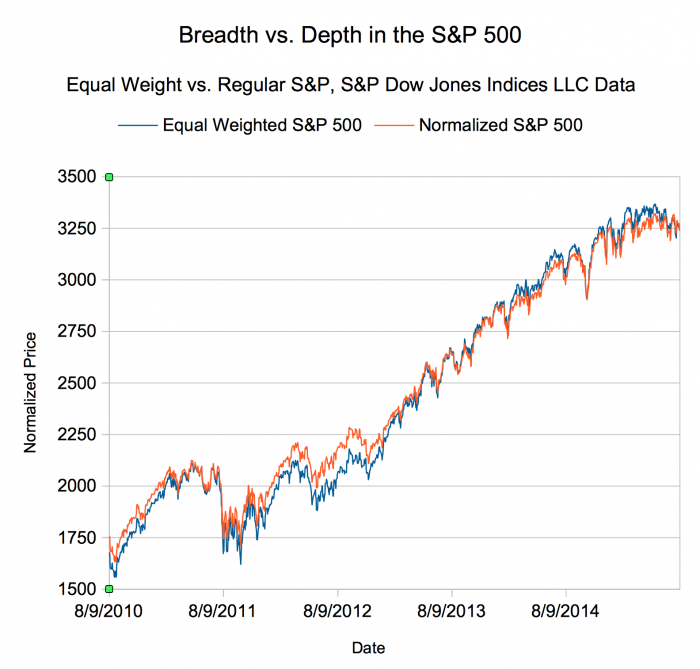We've seen an interesting discussion on market breadth versus depth in various market indices in the recent past.
It's an interesting point - it's like in basketball, where a dominant performance by a star player can mask a decline in fundamentals from the rest of the team. So too in, say, the S&P 500 - dominant performances by big firms can theoretically mask declines in smaller firms - and drive indexes higher even when many companies are falling.
Breadth vs. Depth in the S&P 500
Whether that matters for your purposes... is up to you. If you are an index investor, you are roughly invested in proportion to the size of companies in the index. It only really matters if a fall in depth is a warning of something to come - say, your superstars tiring out.
As for taking a quick cut at it, S&P Dow Jones makes it very easy. They, of course, own the S&P 500 index - but they also publish an 'equal weighted' index. Equal weight indexes assign every company the same value in an index, instead of weighting by market cap (or price, for some indices). It's a subtle change you're looking for, but if you normalize the S&P 500 and the Equal Weight S&P 500 to their 8/7/2015 closing dates, you can tell there has been a recent performance shift:
Remember, it is normalized to the most recent closing price, so what you're seeing is "equal weighted" beating the normal S&P 500 over the last 5 years. However, in the last year and a half the game has changed - the "superstars" are dominating. Here is a compressed view of the indices over that time:
 What Does it Mean?
What Does it Mean?
It depends on how you invest. If you are an index investor (and that's probably the best method) - probably nothing, yet. If you're mining for signs of trouble in the market, though, this is a reasonable one. If the 'average' (huge, if it's in the S&P 500...) company is falling, you're relying more and more on large cap superstars to save the day.
Of course, some superstars can carry the team for a while. Your guess is as good as mine if this means anything...


